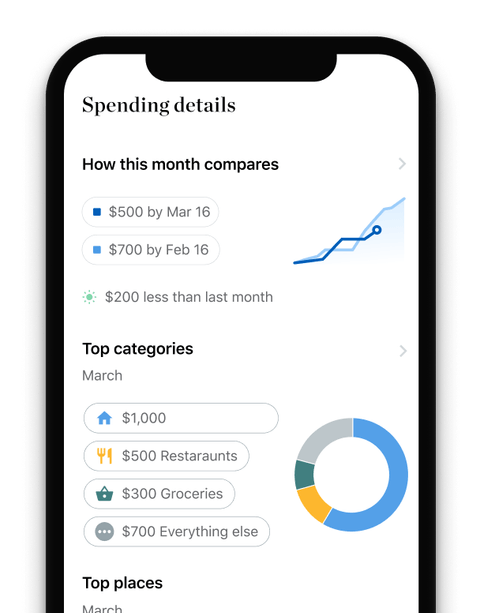12 Places to Sell Stuff Online

Many, or all, of the products featured on this page are from our advertising partners who compensate us when you take certain actions on our website or click to take an action on their website. However, this does not influence our evaluations. Our opinions are our own. Here is a list of our partners and here's how we make money.
When considering how to sell things online, think about what you're selling and the type of online marketplace that suits the product and your preferences.
Here are several online selling sites you could consider, with information on fees and how they work.
Online marketplace and auction sites
There's a handful of major online auction and sales sites, some charge much lower fees than others. The major players, Amazon and eBay, have higher fees, but they're also some of the most highly trafficked sites on the internet. If speed of sale is your goal, these sites are the way to go. If you're trying to maximize your profit, you might take some more time to find a buyer on a smaller site.
Amazon
You can sell pretty much anything on Amazon, although selling certain products, such as home entertainment or major appliances, requires Amazon approval and an upgraded selling plan.
There are two kinds of selling plans, which differ in how Amazon charges fees on items sold:
Individual selling plan: With this plan, you’ll pay Amazon 99 cents per item sold, plus a referral fee. The referral fee is a percentage of the item’s total sale price, including shipping costs, but not taxes, and generally ranges from 8% to 20%. If you’re selling media items, including books, movies and video games, you pay a $1.80 closing fee as well.
For example, say you sell a book for $20. Subtract 99 cents for the per-item fee, an additional $3 for a 15% referral fee and $1.80 for the closing fee. You’ll pocket $14.21.
Professional selling plan: This upgrade requires a $39.99 monthly subscription fee, but you don't have to pay 99 cents per item as you do with the Individual plan. So the professional plan makes sense only if you plan to sell more than 40 items per month.
» Read our guide on how to make money on Amazon

EBay
EBay lets you auction and sell a wide range of goods and charges the following fees:
Insertion fees: It’s free to post up to 250 listings per month. After that, there’s typically a 35-cent “insertion fee” per listing.
Final value fees: Once you sell an item, you must also pay a fee based on the final price, which includes shipping and sales tax. This fee varies based on category, but for most it's 13.25%.
Per order fee. EBay also tacks on a fee per each order, which it defines as “any number of items purchased by the same buyer at checkout with the same shipping method.” For orders $10 or less, this fee is 30 cents. For orders more than $10, it’s 40 cents.
For example, say you list that book on eBay and sell it for $20. Unless you already posted 250 items this month, you won’t pay an insertion fee. When you sell the book, you’ll owe a 14.95% final value fee — this fee is higher for books than for most other categories — which amounts to $2.99. You’ll also owe a 40 cent per-order fee, leaving you with $16.61.
You can also upgrade and promote your eBay listing in various ways for extra fees. For instance, you might want to set a reserve price so that your item is auctioned off for at least that minimum amount. For most product categories, the fee to set a reserve price is $5 or 7.5% of the reserve price — whichever is greater, with a maximum fee of $250. You’re charged this fee whether or not your item sells.
» Read our guide on how to make money on eBay
Bonanza
Bonanza sells a range of products similar to Amazon and eBay and charges fees in a similar way:
Transaction fees: Sellers who don’t have an active membership subscription pay a $0.25 transaction fee when an item sells. (The cost of a subscription is $14.99, if you’d rather go that route.)
Final value fee: This fee is based on the final amount the buyer paid and any shipping cost over $10 after the item sells. So if you sold an item for $20 and shipped it for $13, your fee would be based on a price of $23. Bonanza charges you 3.5% of this price; in our example, you’d pay about 80 cents. There's a minimum fee of 50 cents per item.
For items that sell for $1,000 or more, you pay 3.5% on the first $1,000 and then 1.5% of the amount over $1,000.
Bonanza also offers to advertise your listing across the web in exchange for a higher percentage fee.

Local sales
Craigslist, Facebook Marketplace, Nextdoor
These websites and apps don’t take a cut of your sales, but you’re responsible for connecting with your buyer, arranging payment and making the exchange.
It's definitely a different style from the online auctions and sales. If you're not comfortable handling all the logistics yourself and perhaps meeting up with a stranger, you might want to stick to online only.
Depending on what you're selling, you can arrange to meet your buyer in a public place (many local police stations offer a "safe haven" for such sales) or have a friend hang around while you make the sale.
The simplicity is key: no packing, shipping or fees. But unlike many online-only sales sites, these marketplaces don't have any guarantees or protections if your buyer turns out to be a flake.
Clothes, vintage and crafts shopping sites
The bigger online sites are good for getting rid of miscellaneous stuff, but for specialty items, such as antiques and vintage clothes, you might want to sell to a more intentional audience.
Poshmark
Poshmark is an online sales and social network hybrid for clothing and other goods. Its fee structure is simple: For all sales under $15, you'll be charged a $2.95 fee; for anything $15 or more, the fee is 20%. Poshmark charges your buyer $7.97 for expedited shipping, so you just print out a prepaid shipping label, box up your clothing and send it off.
» Learn more about where to sell clothes online
Ruby Lane
To post items for sale — or “open a shop” — on Ruby Lane, you’ll have to pay a $45 monthly maintenance fee. (That fee is prorated if you open or close your shop before the end of the month.) Ruby Lane also charges a service fee of 9.9% of the total purchase up to $2,500.
Consider whether you can recoup these maintenance and service fees before choosing Ruby Lane.
Etsy
If you're interested in selling your handmade arts and crafts or vintage collectibles, Etsy is where it's at. You pay 20 cents to list an item and then a 6.5% transaction fee on the total sale price of the item, which includes shipping.
You’ll likely have to use Etsy Payments to process your payment, which tacks on an additional fee of 3% of the total sales price, plus a 25-cent flat fee.
» Learn more about how to make money on Etsy
Electronics sites
Swappa, Gazelle
Swappa is a marketplace, and Gazelle functions as a reseller. With Swappa, you set your own price based on similar listings and ship your device directly to the buyer. Gazelle gives you a quote on your smartphone, laptop or tablet, and then you send it to the company.
You can compare pricing details from these sites to find the better option. While these sites work in slightly different ways, both make it easy to get quick bucks for your electronics rather than having them gather dust in a drawer.
» Learn more about how to make money

